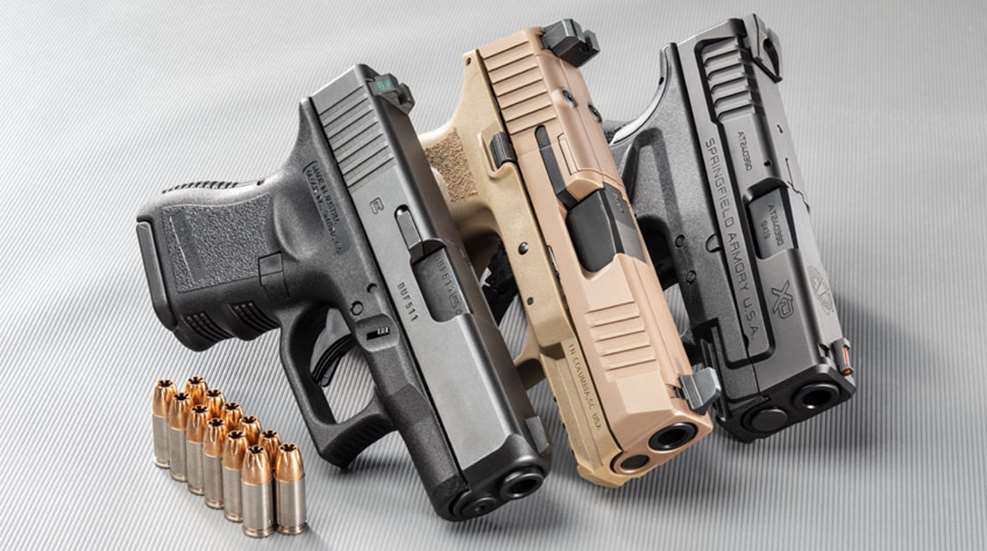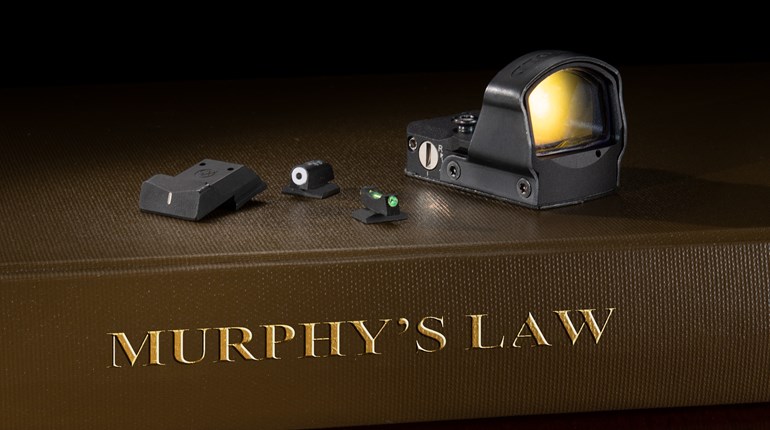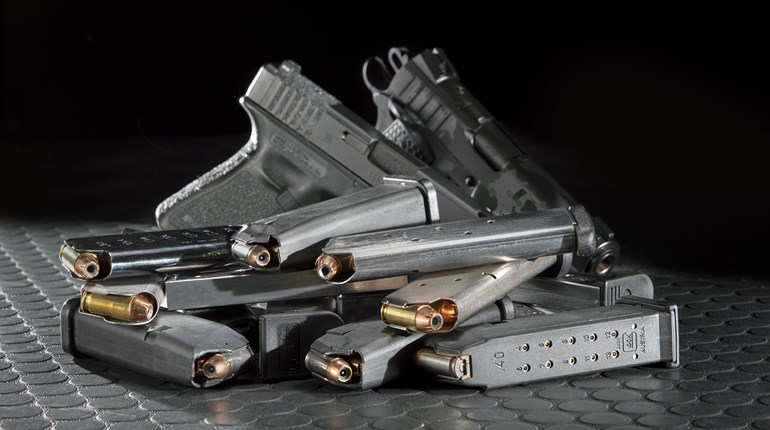
I’ve heard several friends in the shooting and personal-protection communities refer to the latest wave of slim 9 mm pistols as “Twenty-First century J-frames.” Looking at the market niches that have been occupied by these little guns, it’s really hard to disagree.
Ankle and pocket holsters were long the rightful home of the Smith & Wesson Airweight Chiefs Special, its offspring and clones, but now you’re as likely to find something like a Kahr PM9, Springfield Armory XDs or Smith & Wesson Shield pulling that duty as any wheelgun.
But, small-frame revolvers aren’t the market category that’s been encroached upon the most by slim subcompact nines, at least from my observations at gun shows and my local shops. Instead, that sad distinction falls to a category of pistols that are in many ways the forebears of the slim pocket nines, the subcompact, double-stack pistols derived from duty guns.
Double-stack subcompacts like the Glock G26, FN 509 Compact MRD and Springfield XD Mod.2 3-inch offer concealability combined with ample firepower.
The practice of pistolsmiths cutting down duty-size pistols to make smaller carry guns goes back decades. By the mid-1980s, you could buy factory versions of the concept, in the form of Colt’s Officer’s Model and Smith’s Model 469. Both were distinguished by sub-4-inch-barrel lengths and stubby grips, yet retained the ability to feed from the larger-capacity magazine of their un-bobbed, full-size brethren.
It was the mid-’90s and advent of the now-defunct federal magazine capacity restrictions that saw the arrival of the modern-type specimen of this sort of pistol in the form of Glock’s subcompact 10-shot G26. Mechanically identical to its G17 ancestor, it used the same sights, the same magazines, the same triggers—just in a package that had been radically shortened in both height and length for compactness.
These days, pretty much every manufacturer offers a subcompact version of their full-size duty blaster. From Canik’s striker-fired TP9 Elite Subcompact to the Springfield XD Mod.2 3-inch Subcompact to traditional double-action variants of Heckler & Koch’s P30SK, they come in a wide variety of configurations and price points. They’re gradually becoming more feature-rich, too.
The grandpappy of the genre, Glock’s G26, still stubbornly eschews an accessory rail in its Gen5 configuration, but most subcompacts launched these days have one. Manufacturers of weapon-mounted lights have moved quickly to fill this new market niche, too, with lights like Streamlight’s TLR7 and SureFire’s XC1B expressly tailored for use on smaller CCW pistols.
Further, more models are becoming available with factory mounting options for miniature red-dot sights. These sights are becoming more rugged and reliable with each iteration, and while only a handful of subcompacts, like the aforementioned Canik Elite or the just-released FN 509 Compact MRD variant, feature a factory mounting option now, expect it to be an accepted norm in the next few years.
So what advantages do these pistols offer over the slim pocket nines? In return for a small amount of added thickness, you get multiple benefits.
First is the aforementioned ability to use the magazines from the full-size guns. For concealed-carry use, this means you can carry a spare magazine with 17 rounds or more. For the person counting on one gun for both CCW and home defense, they can swap out the stubby 10- or 12-round carry magazine for a bigger stick when the gun is pulling night-stand duty.
Second is the increasing ability to use quality weapon-mounted lights. Again, this is less important on a carry pistol than a home-defense blaster, but it offers the ability to use the same gun for both. Versatility is the name of the game, here.
Next, while some of the slim nines are being offered with factory red-dot mounting options, the slides are generally a little too skinny to work well with the most rugged, duty-type MRDS sights out there: Trijicon RMR, Aimpoint Acro and Leupold Delta-Point Pro, to name the most common of them.
Lastly, and this is probably the most subjective advantage, is that most shooters find it easier to run the double-stack chopped-down duty pistols well than they do the slim, subcompact nines. I know personally I find it to be a lot more work to shoot my personal Glock G43 at speed than my Gen5 G26. As a matter of fact, the whole reason I bought the G26 test gun from Glock was that my times and scores on most standard drills were only a hair’s breadth apart between the Gen5 G26 and the Gen4 G19 I was carrying at the time.
So what’s the use case for each one? In my own day-to-day world, I look at the slimline nine—in my case a G43—the way I looked at five-shot Airweight J-frames: The pistol for pocket holsters, ankle holsters or specialty situations where maximum concealability was the order of the day. My Glock G26 is more like a 2-inch or 3-inch-barreled K-frame in that if I’m going to be carrying in a belt holster anyway, I’ll give up a little thinness and lightness for shootability and more capacity.
Don’t overlook the advantages of the conventional subcompacts; they may be just what you’re looking for.





































